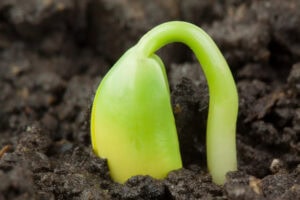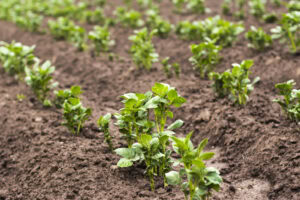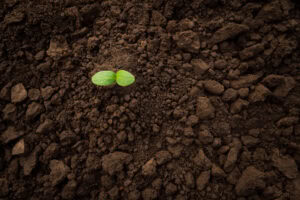Unlock the Power of Biologicals with BioMend+ from CoastBioAdvanced Beneficial Bacteria for Agriculture, Horticulture, and Manufacturing At CoastBio, we understand that soil health is the foundation of successful, sustainable agriculture. That’s why we developed BioMend+, a highly concentrated, water-soluble super blend of beneficial bacteria and fungi designed to revitalize soil, support plant growth, and improve…

Harnessing Nature’s Power: How Beneficial Bacteria Revolutionize Agriculture
Modern agriculture faces mounting challenges—soil degradation, nutrient depletion, and the urgent need for sustainable solutions. Beneficial bacteria, including Bacillus and Trichoderma species, offer a promising natural solution that transforms soil health and boosts crop yields. At CoastBio, we specialize in innovative biological solutions designed to support regenerative agriculture and improve plant vitality naturally. The Role…

Harnessing the Power of Fungi: Bioremediation of Mercury Contamination
Harnessing the Power of Fungi: Bioremediation of Mercury Contamination Heavy metal contamination poses a significant threat to environmental and human health worldwide. Among these metals, mercury stands out as one of the most hazardous due to its persistence and toxicity. However, nature provides us with an incredible ally in the fight against mercury pollution: fungi….

Boost Transplant Success with Coast Bio’s 4-1-1 Pods: Fast-Acting Nutrients for Stronger Roots
Boost Transplant Success with Coast Bio’s 4-1-1 Pods: Fast-Acting Nutrients for Stronger Roots When it comes to successful transplanting, the first few days are critical. Coast Bio’s 4-1-1 Pods are specially designed to deliver essential nutrients directly to the root zone when plants need them most. These convenient, pre-measured pods provide a balanced NPK formula…

Restoring Forests Naturally: How Beneficial Bacteria Support Reforestation Efforts
Restoring Forests Naturally: How Beneficial Bacteria Support Reforestation Efforts Reforestation plays a crucial role in combating climate change, restoring biodiversity, and improving soil health. At Coast Bio, we understand that successful reforestation efforts depend not only on planting trees but also on rebuilding the delicate microbial ecosystems that support long-term plant growth. Our all-natural biological…

Enhancing Reforestation Projects with Biological Soil Amendments for Rapid Tree Growth
Reforestation plays a vital role in combating climate change, restoring biodiversity, and reversing land degradation. However, replanting trees is only half the battle—ensuring their rapid growth and long-term survival requires a healthy, living soil ecosystem. That’s where biological soil amendments from CoastBio come in. The Power of Biological Soil Amendments Biological soil amendments are rich…

How Endomycorrhiza Supports Plant Resilience Against Environmental Stress
How Endomycorrhiza Supports Plant Resilience Against Environmental Stress Healthy soil biology is the key to strong, resilient plants. One of nature’s most powerful tools for promoting plant health is endomycorrhiza—a type of beneficial fungus that forms symbiotic relationships with plant roots. At CoastBio, we understand the science behind these relationships and how they can transform…

Sustainable Approaches to Soil Decontamination with CoastBio Products
Restoring Soil Health Naturally Soil contamination from industrial activities, pesticides, and synthetic fertilizers poses a significant threat to agriculture and the environment. CoastBio’s biological soil remediation solutions offer a natural, effective way to restore soil quality and productivity. The Dangers of Soil Contamination Contaminated soil leads to: Reduced crop yields and poor plant health. Accumulation…

Why Choose CoastBio’s Environmentally Regenerative Agricultural Solutions?
Sustainable Farming with Proven Biological Advancements With growing concerns about climate change and soil depletion, regenerative agriculture has emerged as a sustainable farming model that improves soil health while reducing reliance on chemical inputs. CoastBio leads the way with eco-friendly, all-natural agricultural products designed to restore soil vitality and boost crop resilience. The Benefits of…

How Ectomycorrhiza Solutions Promote Reforestation
How Ectomycorrhiza Solutions Promote Reforestation Strengthening Forest Growth with Beneficial Fungi Reforestation plays a crucial role in combating deforestation, restoring ecosystems, and sequestering carbon. CoastBio’s ectomycorrhiza-based solutions enhance tree survival rates, ensuring successful forest restoration projects. Ectomycorrhiza vs. Endomycorrhiza Mycorrhizal fungi form symbiotic relationships with plant roots, aiding in nutrient absorption and stress resistance. Ectomycorrhiza…
